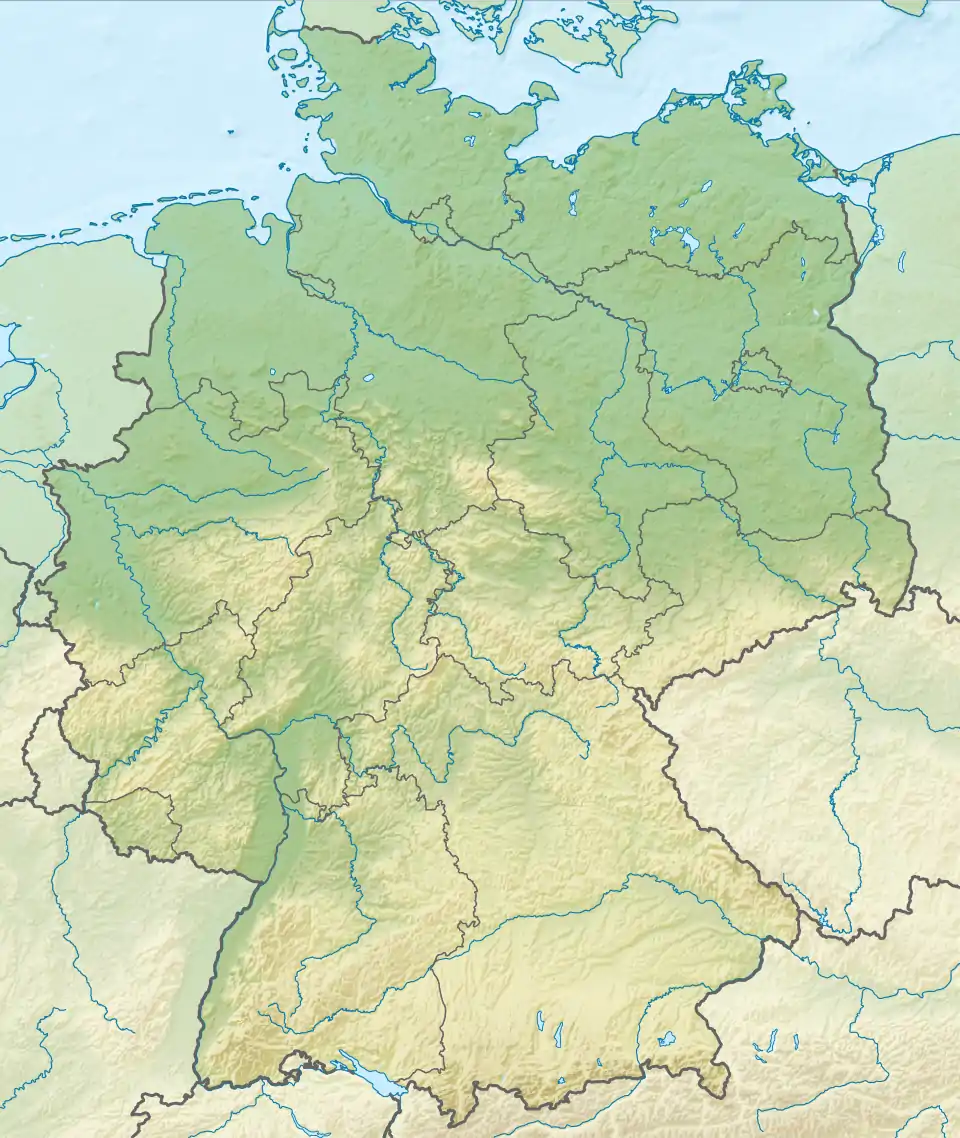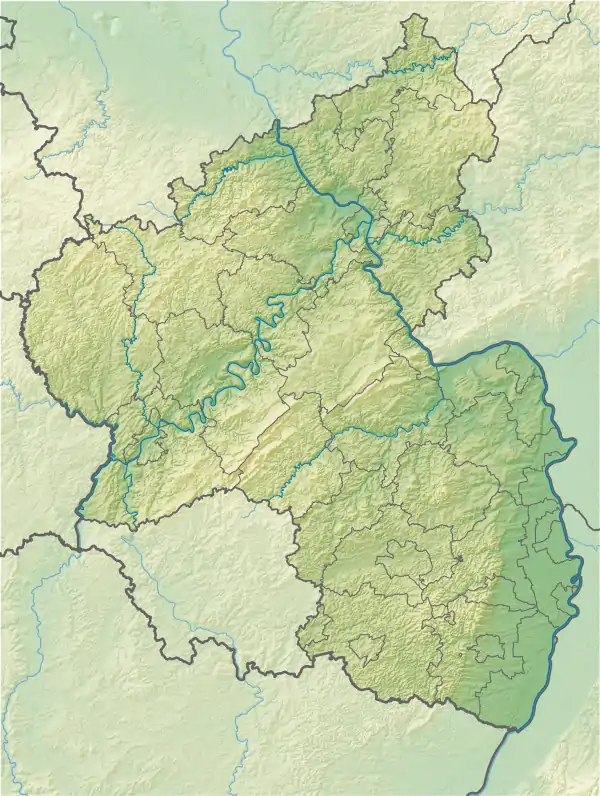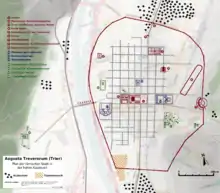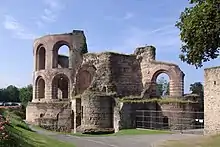Trier Imperial Baths
The Trier Imperial Baths (German: Kaiserthermen) are a large Roman bath complex in Trier, Germany. The complex was constructed in the early 4th century AD, during the reign of Constantine I. During that time, Trier was a major imperial hub, being a primary residence for Constantine's son Crispus. The baths were built around hot water pools reaching 40°C.[1] Underneath the complex was a network of underground passageways used by the staff which can still be seen today, along with the remains of the sewer system.[1] However, the baths were never completed and were made into a castle in the Middle Ages.[2]
| UNESCO World Heritage Site | |
|---|---|
 | |
| Location | Trier, Rhineland-Palatinate, Germany |
| Part of | Roman Monuments, Cathedral of St Peter and Church of Our Lady in Trier |
| Criteria | Cultural: (i), (iii), (iv), (vi) |
| Reference | 367-006 |
| Inscription | 1986 (10th Session) |
| Coordinates | 49°44′59″N 6°38′32″E |
 Location of Trier Imperial Baths in Germany  Trier Imperial Baths (Rhineland-Palatinate) | |
History
Roman Period
Constantius Chlorus initiated construction of the baths shortly before 300 C.E. and construction ceased around 316 C.E. with the baths still incomplete. Like Imperial baths found in Rome, such as the Baths of Caracalla or the Baths of Trajan, the Trier Imperial Baths were divided into two parts, the thermae and the palaestra. The palaestra measures 160 by 130 meters, while the main bath building is west of these exercise grounds.
Gallery

 Augusta Treverorum City Plan
Augusta Treverorum City Plan

 Model of the Baths
Model of the Baths



 1983, before some restoration
1983, before some restoration

 remains of walls and subterranean passages
remains of walls and subterranean passages

External links
- "Tourist-Information Trier: Imperial Baths: Info". trier-info.de. Retrieved 2014-01-31.